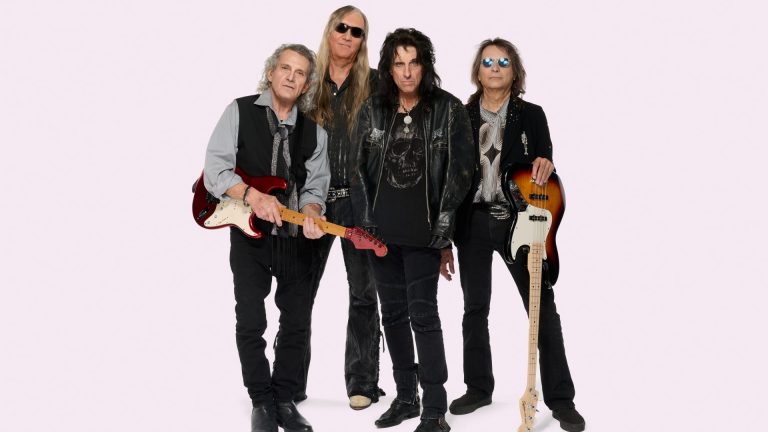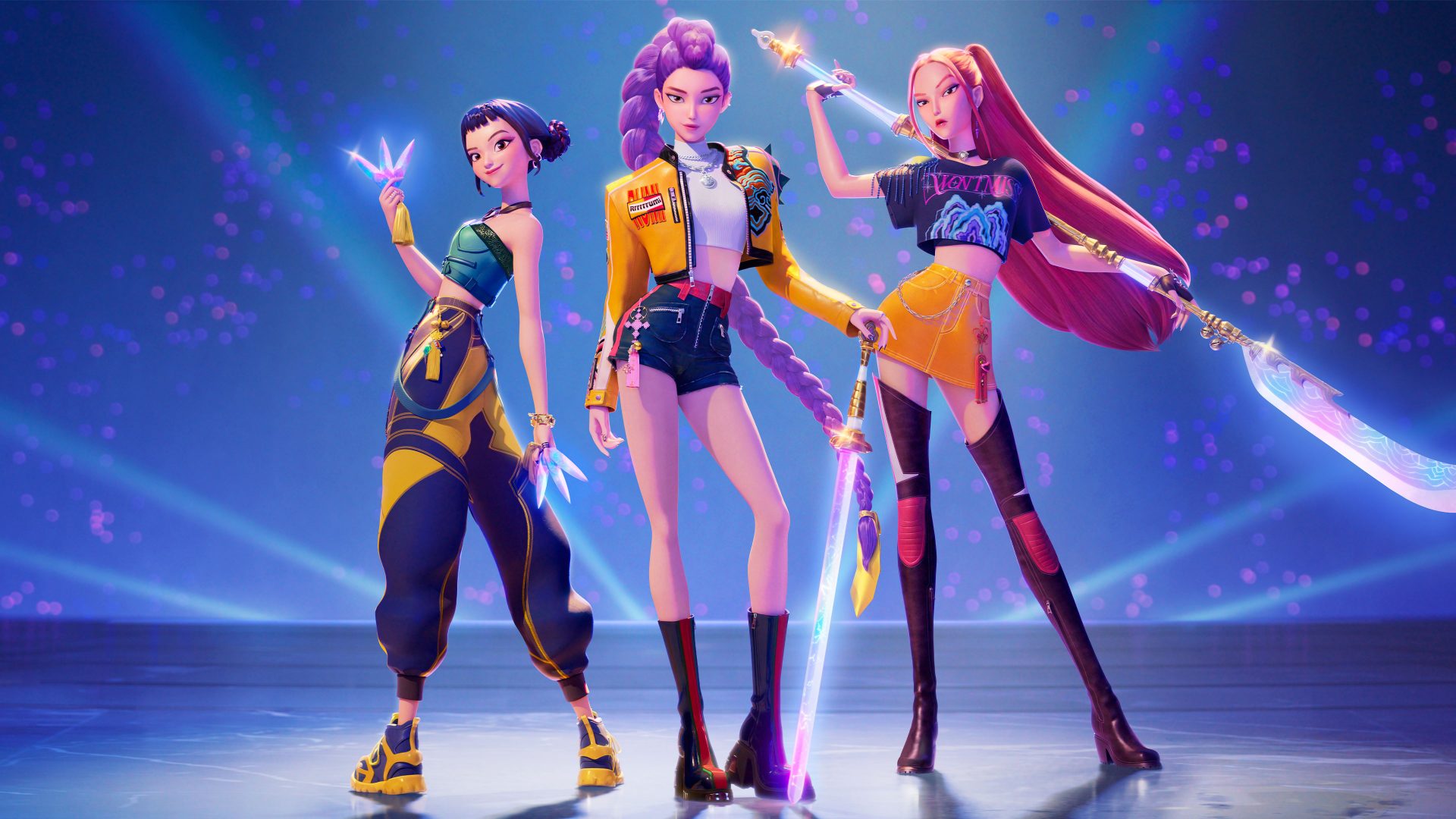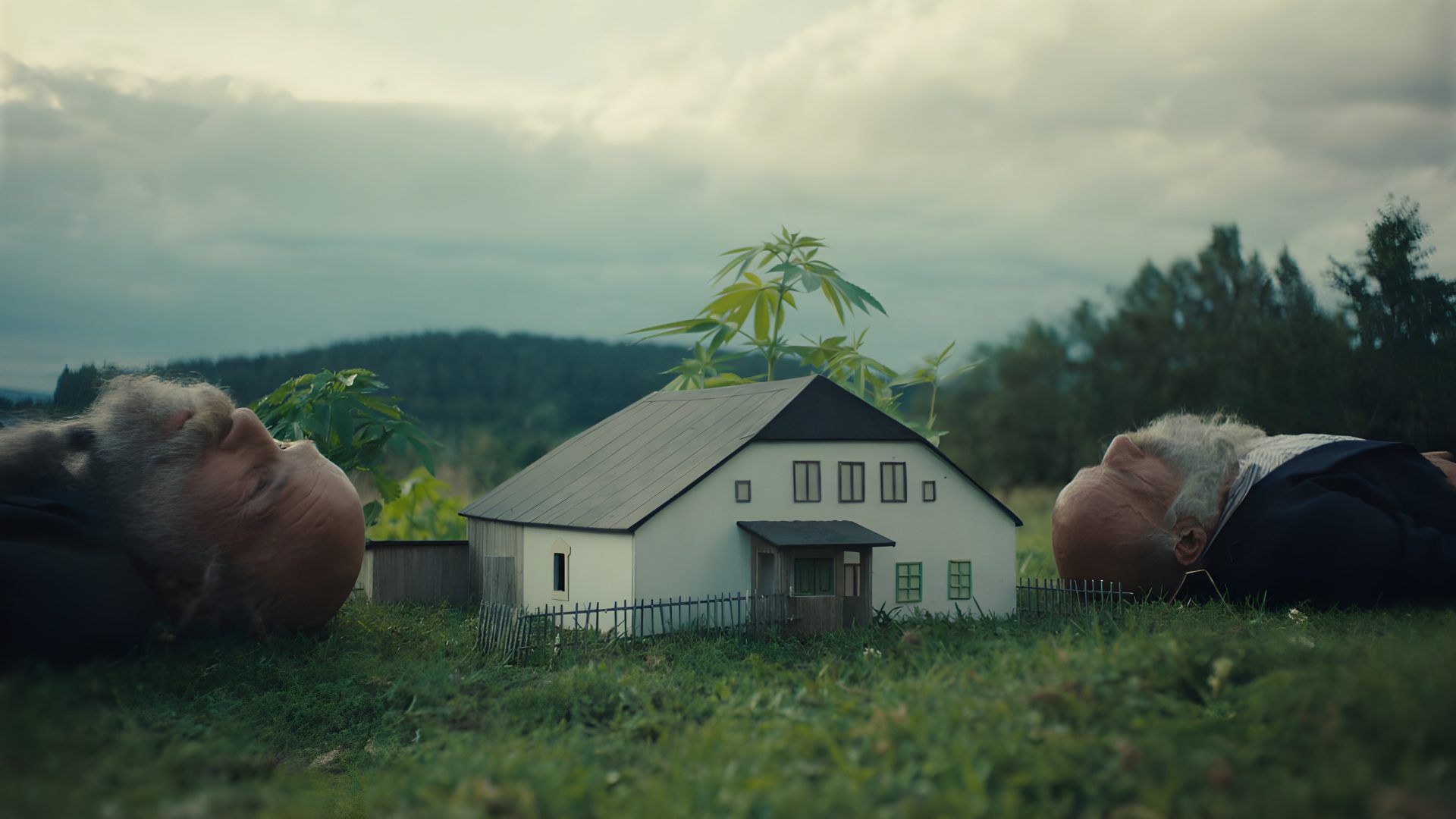It is a feat even the Wombles couldn’t achieve. Mike Batt’s fictional band may have been the biggest-selling act of 1974, but they never topped the charts. But now, an imaginary group has become only the third of its kind to hit the UK top spot, following cartoon group the Archies’ Sugar, Sugar in 1969, and Gorillaz’s Dare in 2005.
HUNTR/X, an animated K-pop girlband, are the eponymous stars of the new Netflix hit KPop Demon Hunters, and they are currently sitting at No 1 with Golden, a soaring anthem of self-discovery and self-belief (“I’m done hiding, now I’m shining/ Like I’m born to be”). Remarkably, two other songs from the film, the moody Your Idol and the bubblegum Soda Pop, both by the fictional boyband Saja Boys, are currently charting at No 10 and 11 here. With Golden also vying for the top spot in the US, and the film having been streamed over 26 million times since its June release, KPop Demon Hunters is already a global sensation, and its all-encompassing success is revealing of the direction popular culture is taking in a hyper-connected world.
KPop Demon Hunters is an ancient tale of good against evil as HUNTR/X, not just popstars but also the latest in a centuries-long line of demon hunters, battle the forces of the underworld through a combination of the power of their voices and killer martial-arts moves. The three members, purple-haired lead singer Rumi, rebellious dancer Mira, and Korean-American rapper Zoey, take no nonsense from anyone, not least the irritatingly pretty Saja Boys. The rival group are quickly revealed to be demons in disguise, hellbent on feasting on the souls of their fans.
Rumi, like all great heroes, has a potentially fatal flaw which provides the basis for plenty of drama, and while the breakneck action and scary bad guys keep kids interested, the sharp script, stylish look and heartfelt message of self-acceptance means KPop Demon Hunters easily holds adult attention too. But what really makes the film is the originality and diversity of its reference points and the quality of its songs.
Maggie Kang, the Korean-born and US-raised director of Sony Pictures Animation, was the creative force behind the film, drawing on both her personal background and her cinematic influences. While KPop Demon Hunters mirrors the sophisticated animation and emotional depth of Sony’s Spider-Man: Across the Spider-Verse (2023), Kang has also brought the surrealism of classic anime and silhouettes that echo Kurosawa to the film, giving it textures way beyond the average kids’ flick.
Kang’s use of characters from Korean mythology is also staggeringly effective. The Saja Boys are based on Jeoseung Saja, the broad-hatted grim reapers of myth, while the stylised, colourful demons take dokkaebi goblins and Hahoetal traditional wooden masks for inspiration. These centuries-old influences have resulted in cartoon baddies that are both novel and distinctive, and the film’s blue tiger and six-eyed magpie characters, based on a common device in minhwa Korean folk art, are a merchandiser’s dream (a cuddly tiger is already available on the Netflix shop, a snip at £44).
Suggested Reading


The revenge of Alice Cooper
Meanwhile, the music cuts no corners, and the soundtrack’s success in the cut-throat world of streams and sales is unsurprising. HUNTR/X’s singing voices are supplied by performers from the K-pop world – singer, writer and producer Ejae, and American rappers of Korean origin, Audrey Nuna and Rei Ami – while former talent show contestant Andrew Choi is antihero Jinu, leader of the Saja Boys. A whole host of K-pop producers and writers pitched in on KPop Demon Hunters’ energetic, memorable songs, including Teddy Park, a past collaborator with Blackpink, and the Grammy-winning Lindgren, who has K-pop kings BTS on his CV.
But beyond its own merits, KPop Demon Hunters also tells us something about the globalisation of popular culture and how boundaries between artistic forms are dissolving. K-pop has been tearing down cultural borders ever since Psy’s Gangnam Style conquered the world in 2012. By 2020, with BTS’s Dynamite going to No 1 in the US and garnering a fanatical following in the west, K-pop seemed to have proved that, in a digitally networked world, popular culture could reach across continents to capture hearts and minds to a profound degree.
KPop Demon Hunters goes further. It not only faithfully portrays the lore of K-pop (the power of fandom is key to its denouement) and the lifestyle in Seoul (characters eat kimbap, go to the jjimjilbang bathhouse and visit a Hanbang traditional medicine doctor) in a way that is unselfconscious, but it does so for a mainstream family audience. The grammar of Korean culture is now a universally understood language.
As a pop phenomenon just as much as a screen one, KPop Demon Hunters is also evidence of the blurring between once distinct cultural domains. A precedent was set when Lin-Manuel Miranda’s We Don’t Talk About Bruno, the salsa earworm from Disney’s Encanto, spent seven weeks at UK No 1 in early 2022.
But despite Encanto’s Surface Pressure also becoming a chart hit, it was nothing like the seven songs from KPop Demon Hunters that have charted. And while Miranda, hot from Hamilton, injected the modus operandi of the musical into Encanto, the film is yet to reappear on stage, while KPop Demon Hunters, with its strongly narrative songs, is apparently already being reworked for such a purpose.
Perhaps the greatest contribution KPop Demon Hunters is making to contemporary culture, however, is that it is a completely original universe in a cultural landscape dominated by interminable franchises and questionable rehashes. The film has brought into being three uber-cool heroines and a whole new world of adversaries to be defeated. With no less than three follow-up films rumoured to be in the offing, Rumi, Mira, and Zoey are set to become very familiar faces indeed.
Sophia Deboick is a freelance writer who specialises in music and cultural icons




